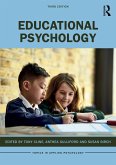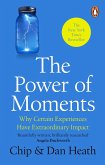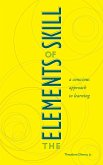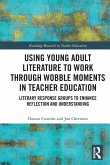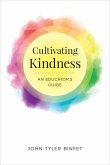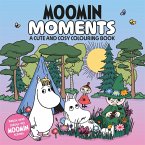Colette Granger
Silent Moments in Education
An Autoethnography of Learning, Teaching, and Learning to Teach
Colette Granger
Silent Moments in Education
An Autoethnography of Learning, Teaching, and Learning to Teach
- Gebundenes Buch
- Merkliste
- Auf die Merkliste
- Bewerten Bewerten
- Teilen
- Produkt teilen
- Produkterinnerung
- Produkterinnerung
Silent Moments in Education combines autoethnography with psychoanalytic theory and critical discourse analysis in a unique consideration of the relations teachers and learners forge with knowledge, with ideas, and with one another.
Andere Kunden interessierten sich auch für
![Educational Psychology Educational Psychology]() Educational Psychology49,99 €
Educational Psychology49,99 €![The Power of Moments The Power of Moments]() Chip HeathThe Power of Moments14,99 €
Chip HeathThe Power of Moments14,99 €![Moving Moments in Childhood Moving Moments in Childhood]() Lori BaudinoMoving Moments in Childhood31,99 €
Lori BaudinoMoving Moments in Childhood31,99 €![The Elements of Skill The Elements of Skill]() Dimon, Theodore, Jr.The Elements of Skill18,99 €
Dimon, Theodore, Jr.The Elements of Skill18,99 €![Using Young Adult Literature to Work through Wobble Moments in Teacher Education Using Young Adult Literature to Work through Wobble Moments in Teacher Education]() Dawan Coombs (USA Brigham Young University)Using Young Adult Literature to Work through Wobble Moments in Teacher Education53,99 €
Dawan Coombs (USA Brigham Young University)Using Young Adult Literature to Work through Wobble Moments in Teacher Education53,99 €![Cultivating Kindness Cultivating Kindness]() John-Tyler BinfetCultivating Kindness32,99 €
John-Tyler BinfetCultivating Kindness32,99 €![Moomin Moments Moomin Moments]() Macmillan Children's BooksMoomin Moments9,49 €
Macmillan Children's BooksMoomin Moments9,49 €-
-
-
Silent Moments in Education combines autoethnography with psychoanalytic theory and critical discourse analysis in a unique consideration of the relations teachers and learners forge with knowledge, with ideas, and with one another.
Produktdetails
- Produktdetails
- University of Toronto Press
- Verlag: University of Toronto Press
- Seitenzahl: 336
- Erscheinungstermin: 10. Dezember 2011
- Englisch
- Abmessung: 236mm x 160mm x 18mm
- Gewicht: 636g
- ISBN-13: 9781442643208
- ISBN-10: 144264320X
- Artikelnr.: 33807126
- Herstellerkennzeichnung
- Libri GmbH
- Europaallee 1
- 36244 Bad Hersfeld
- gpsr@libri.de
- University of Toronto Press
- Verlag: University of Toronto Press
- Seitenzahl: 336
- Erscheinungstermin: 10. Dezember 2011
- Englisch
- Abmessung: 236mm x 160mm x 18mm
- Gewicht: 636g
- ISBN-13: 9781442643208
- ISBN-10: 144264320X
- Artikelnr.: 33807126
- Herstellerkennzeichnung
- Libri GmbH
- Europaallee 1
- 36244 Bad Hersfeld
- gpsr@libri.de
Abstract
Acknowledgements
List of figures
Prologue First Circumnarrative: the sun
Introduction
* Silent Moments
* Conceptual framework: if it's not one thing, it's an Other
* Telling the story: autoethnography
* Reading the story: discourse analysis and psychoanalysis
* The shape of the study: “Every moment is two moments”
PART I
* Second circumnarrative: the wind
Chapter One
Stories about facts: Ethnography, autoethnography, discourse analysis
The facts
* Ethnography and autoethnography: ways to write about things
* Educational ethnography: ways to write about school things
* Detour: Malinowski's diary, or, a funny thing happened on the way to
autoethnography
* Autoethnography: the researcher as one of those things
* Discourse analysis: ways to think about things
Chapter Two
Stories of stories: Narrative, memory, psychoanalysis
The field notes
1. Reading the field notes
2. The personal
3. Narrative and memory
4. Psychoanalytic concepts: ways of reading and thinking
* The unconscious
* Repression
* Deferred action
* The mystic writing-pad
* Screen memories
Chapter Three
Field notes, felt-notes, felt and noted: Silencing learning, silencing
desire
5. The data
* Field notes, revised, with feeling, first part
* Feel-ed/felt-notes, second part
* Felt, and noted, third part
6. Reading the field/feel-ed/felt notes
* Psychoanalysis reads
* Psychoanalysis reads resistance
* Psychoanalysis reads repression
* Psychoanalysis reads desire
7. Telling and re-telling: the same old story?
8. Difference, discourse, desire. And moving on
Part II
* Third circumnarrative: the rain
Chapter Four
Curiosity kills the silence: On (not) representing sex in kindergarten
* Mapping the body: pictures, words, silence
* Constructing the child, constructing sex
* Constructing the child: “sitting up, shutting up and lining up” in
kindergarten
* Constructing appropriateness
* Orders and hints: reading the empty spaces
Chapter Five
Another nice mess: Teachers translated by technology
* The computer and the teacher
* The teacher's work, the teacher's power: autonomy and authority
* A problem of identity: the teacher relocated
* Self, love, work: the unconscious (in) teaching
* Transference: the teacher in the (Lacanian) mirror
* Translating and reflecting: computer screen as pixelated mirror
Part III
* Fourth circumnarrative: the snow
Chapter Six
Neither here nor there: Difficult moments in teacher education
* Coming to theory: assumptions and beliefs about teaching and learning
* Resisting theory: changing minds and making trouble
* Troubling theory: a psychoanalytic reading
* Splitting (through) theory: the self divided
Chapter Seven
Ghosts that haunt us: “Forbidden narratives” of learning to teach
9. Thinking theory: from splitting to insight
10. Practising practicum: coming to the data
11. Telling the tale: the data
12. Power and resistance: reading stories with Foucault
13. The ghost and the host (teacher): reading stories with psychoanalysi
* Who do I think I am? The return of the repressed
* Who do I think you are? Transference in the practicum
* Who do I think I’m kid(d)ing?
* Who do I think I’m killing? Matricide and the practicum
14. Remembering and repeating, objects and stories: what comes next?
15. Fifth circumnarrative: the spring
(in)Conclusion
* Conversation
* Reflection
* Silence
* Secrets
* Ethics
* Listening
* Caring, loving, hoping
Epilogue Sixth circumnarrative: around and after words
References
Acknowledgements
List of figures
Prologue First Circumnarrative: the sun
Introduction
* Silent Moments
* Conceptual framework: if it's not one thing, it's an Other
* Telling the story: autoethnography
* Reading the story: discourse analysis and psychoanalysis
* The shape of the study: “Every moment is two moments”
PART I
* Second circumnarrative: the wind
Chapter One
Stories about facts: Ethnography, autoethnography, discourse analysis
The facts
* Ethnography and autoethnography: ways to write about things
* Educational ethnography: ways to write about school things
* Detour: Malinowski's diary, or, a funny thing happened on the way to
autoethnography
* Autoethnography: the researcher as one of those things
* Discourse analysis: ways to think about things
Chapter Two
Stories of stories: Narrative, memory, psychoanalysis
The field notes
1. Reading the field notes
2. The personal
3. Narrative and memory
4. Psychoanalytic concepts: ways of reading and thinking
* The unconscious
* Repression
* Deferred action
* The mystic writing-pad
* Screen memories
Chapter Three
Field notes, felt-notes, felt and noted: Silencing learning, silencing
desire
5. The data
* Field notes, revised, with feeling, first part
* Feel-ed/felt-notes, second part
* Felt, and noted, third part
6. Reading the field/feel-ed/felt notes
* Psychoanalysis reads
* Psychoanalysis reads resistance
* Psychoanalysis reads repression
* Psychoanalysis reads desire
7. Telling and re-telling: the same old story?
8. Difference, discourse, desire. And moving on
Part II
* Third circumnarrative: the rain
Chapter Four
Curiosity kills the silence: On (not) representing sex in kindergarten
* Mapping the body: pictures, words, silence
* Constructing the child, constructing sex
* Constructing the child: “sitting up, shutting up and lining up” in
kindergarten
* Constructing appropriateness
* Orders and hints: reading the empty spaces
Chapter Five
Another nice mess: Teachers translated by technology
* The computer and the teacher
* The teacher's work, the teacher's power: autonomy and authority
* A problem of identity: the teacher relocated
* Self, love, work: the unconscious (in) teaching
* Transference: the teacher in the (Lacanian) mirror
* Translating and reflecting: computer screen as pixelated mirror
Part III
* Fourth circumnarrative: the snow
Chapter Six
Neither here nor there: Difficult moments in teacher education
* Coming to theory: assumptions and beliefs about teaching and learning
* Resisting theory: changing minds and making trouble
* Troubling theory: a psychoanalytic reading
* Splitting (through) theory: the self divided
Chapter Seven
Ghosts that haunt us: “Forbidden narratives” of learning to teach
9. Thinking theory: from splitting to insight
10. Practising practicum: coming to the data
11. Telling the tale: the data
12. Power and resistance: reading stories with Foucault
13. The ghost and the host (teacher): reading stories with psychoanalysi
* Who do I think I am? The return of the repressed
* Who do I think you are? Transference in the practicum
* Who do I think I’m kid(d)ing?
* Who do I think I’m killing? Matricide and the practicum
14. Remembering and repeating, objects and stories: what comes next?
15. Fifth circumnarrative: the spring
(in)Conclusion
* Conversation
* Reflection
* Silence
* Secrets
* Ethics
* Listening
* Caring, loving, hoping
Epilogue Sixth circumnarrative: around and after words
References
Abstract
Acknowledgements
List of figures
Prologue First Circumnarrative: the sun
Introduction
* Silent Moments
* Conceptual framework: if it's not one thing, it's an Other
* Telling the story: autoethnography
* Reading the story: discourse analysis and psychoanalysis
* The shape of the study: “Every moment is two moments”
PART I
* Second circumnarrative: the wind
Chapter One
Stories about facts: Ethnography, autoethnography, discourse analysis
The facts
* Ethnography and autoethnography: ways to write about things
* Educational ethnography: ways to write about school things
* Detour: Malinowski's diary, or, a funny thing happened on the way to
autoethnography
* Autoethnography: the researcher as one of those things
* Discourse analysis: ways to think about things
Chapter Two
Stories of stories: Narrative, memory, psychoanalysis
The field notes
1. Reading the field notes
2. The personal
3. Narrative and memory
4. Psychoanalytic concepts: ways of reading and thinking
* The unconscious
* Repression
* Deferred action
* The mystic writing-pad
* Screen memories
Chapter Three
Field notes, felt-notes, felt and noted: Silencing learning, silencing
desire
5. The data
* Field notes, revised, with feeling, first part
* Feel-ed/felt-notes, second part
* Felt, and noted, third part
6. Reading the field/feel-ed/felt notes
* Psychoanalysis reads
* Psychoanalysis reads resistance
* Psychoanalysis reads repression
* Psychoanalysis reads desire
7. Telling and re-telling: the same old story?
8. Difference, discourse, desire. And moving on
Part II
* Third circumnarrative: the rain
Chapter Four
Curiosity kills the silence: On (not) representing sex in kindergarten
* Mapping the body: pictures, words, silence
* Constructing the child, constructing sex
* Constructing the child: “sitting up, shutting up and lining up” in
kindergarten
* Constructing appropriateness
* Orders and hints: reading the empty spaces
Chapter Five
Another nice mess: Teachers translated by technology
* The computer and the teacher
* The teacher's work, the teacher's power: autonomy and authority
* A problem of identity: the teacher relocated
* Self, love, work: the unconscious (in) teaching
* Transference: the teacher in the (Lacanian) mirror
* Translating and reflecting: computer screen as pixelated mirror
Part III
* Fourth circumnarrative: the snow
Chapter Six
Neither here nor there: Difficult moments in teacher education
* Coming to theory: assumptions and beliefs about teaching and learning
* Resisting theory: changing minds and making trouble
* Troubling theory: a psychoanalytic reading
* Splitting (through) theory: the self divided
Chapter Seven
Ghosts that haunt us: “Forbidden narratives” of learning to teach
9. Thinking theory: from splitting to insight
10. Practising practicum: coming to the data
11. Telling the tale: the data
12. Power and resistance: reading stories with Foucault
13. The ghost and the host (teacher): reading stories with psychoanalysi
* Who do I think I am? The return of the repressed
* Who do I think you are? Transference in the practicum
* Who do I think I’m kid(d)ing?
* Who do I think I’m killing? Matricide and the practicum
14. Remembering and repeating, objects and stories: what comes next?
15. Fifth circumnarrative: the spring
(in)Conclusion
* Conversation
* Reflection
* Silence
* Secrets
* Ethics
* Listening
* Caring, loving, hoping
Epilogue Sixth circumnarrative: around and after words
References
Acknowledgements
List of figures
Prologue First Circumnarrative: the sun
Introduction
* Silent Moments
* Conceptual framework: if it's not one thing, it's an Other
* Telling the story: autoethnography
* Reading the story: discourse analysis and psychoanalysis
* The shape of the study: “Every moment is two moments”
PART I
* Second circumnarrative: the wind
Chapter One
Stories about facts: Ethnography, autoethnography, discourse analysis
The facts
* Ethnography and autoethnography: ways to write about things
* Educational ethnography: ways to write about school things
* Detour: Malinowski's diary, or, a funny thing happened on the way to
autoethnography
* Autoethnography: the researcher as one of those things
* Discourse analysis: ways to think about things
Chapter Two
Stories of stories: Narrative, memory, psychoanalysis
The field notes
1. Reading the field notes
2. The personal
3. Narrative and memory
4. Psychoanalytic concepts: ways of reading and thinking
* The unconscious
* Repression
* Deferred action
* The mystic writing-pad
* Screen memories
Chapter Three
Field notes, felt-notes, felt and noted: Silencing learning, silencing
desire
5. The data
* Field notes, revised, with feeling, first part
* Feel-ed/felt-notes, second part
* Felt, and noted, third part
6. Reading the field/feel-ed/felt notes
* Psychoanalysis reads
* Psychoanalysis reads resistance
* Psychoanalysis reads repression
* Psychoanalysis reads desire
7. Telling and re-telling: the same old story?
8. Difference, discourse, desire. And moving on
Part II
* Third circumnarrative: the rain
Chapter Four
Curiosity kills the silence: On (not) representing sex in kindergarten
* Mapping the body: pictures, words, silence
* Constructing the child, constructing sex
* Constructing the child: “sitting up, shutting up and lining up” in
kindergarten
* Constructing appropriateness
* Orders and hints: reading the empty spaces
Chapter Five
Another nice mess: Teachers translated by technology
* The computer and the teacher
* The teacher's work, the teacher's power: autonomy and authority
* A problem of identity: the teacher relocated
* Self, love, work: the unconscious (in) teaching
* Transference: the teacher in the (Lacanian) mirror
* Translating and reflecting: computer screen as pixelated mirror
Part III
* Fourth circumnarrative: the snow
Chapter Six
Neither here nor there: Difficult moments in teacher education
* Coming to theory: assumptions and beliefs about teaching and learning
* Resisting theory: changing minds and making trouble
* Troubling theory: a psychoanalytic reading
* Splitting (through) theory: the self divided
Chapter Seven
Ghosts that haunt us: “Forbidden narratives” of learning to teach
9. Thinking theory: from splitting to insight
10. Practising practicum: coming to the data
11. Telling the tale: the data
12. Power and resistance: reading stories with Foucault
13. The ghost and the host (teacher): reading stories with psychoanalysi
* Who do I think I am? The return of the repressed
* Who do I think you are? Transference in the practicum
* Who do I think I’m kid(d)ing?
* Who do I think I’m killing? Matricide and the practicum
14. Remembering and repeating, objects and stories: what comes next?
15. Fifth circumnarrative: the spring
(in)Conclusion
* Conversation
* Reflection
* Silence
* Secrets
* Ethics
* Listening
* Caring, loving, hoping
Epilogue Sixth circumnarrative: around and after words
References


